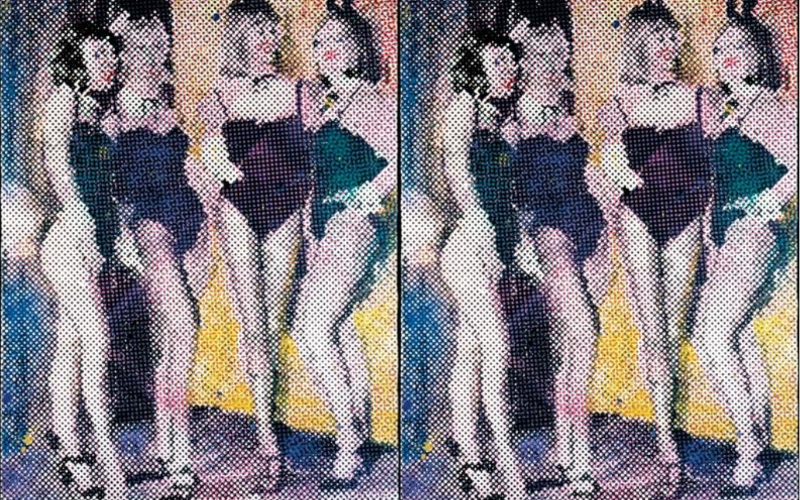Bunnies, an early Polke painting, is a prime illustration of the artist’s skill at distancing spectators while simultaneously submerging them in the images.
It’s possible that the artwork was inspired by a membership commercial for Hugh Hefner’s Playboy Clubs. The first of these clubs opened its doors in 1960, and the original image would have served as more than simply a picture of stunning women intended to arouse sexual desire; it would have also served as an appealing representation of a lifestyle that could be purchased.
These sex signs are broken down by Polke into clumps of dots and streaks, revealing the deceptive illusion of the picture. Polke satisfies the viewer’s need by highlighting the image’s materiality at the price of the women’s clarity and uniqueness.
Bunnies is made out of a dot technique that is common to many of his works from the middle of the 1960s. The style is obviously a nod to Roy Lichtenstein’s and other Pop artists‘ well-known dot paintings.
Polke’s dots, however, are emphasized and magnified for emphasis. Polke uses dots to deform and hide his themes, whereas Lichtenstein uses dots to define and simplify a composition.
Rasterbilder is the name of Polke’s dot printing technique, which makes use of a raster screen. Ever concerned in how things are made and reproduced, Polke introduces erratic-sized dots and new colors to the often dependable printing process to make it unstable.
In this piece, Polke plays with the audience’s typical responses to these kinds of pictures. High-definition images in portable formats are used by publications like Playboy to show women as physically alluring sexual objects, compelling the spectator to look closer.
Polke makes the viewer uncomfortable and compels them to confront their usual viewing habits by hanging his enormous work (59 x 39.5 inches) on the wall of a gallery and luring the viewer in to examine the women’s bodies in the open area of the museum.











